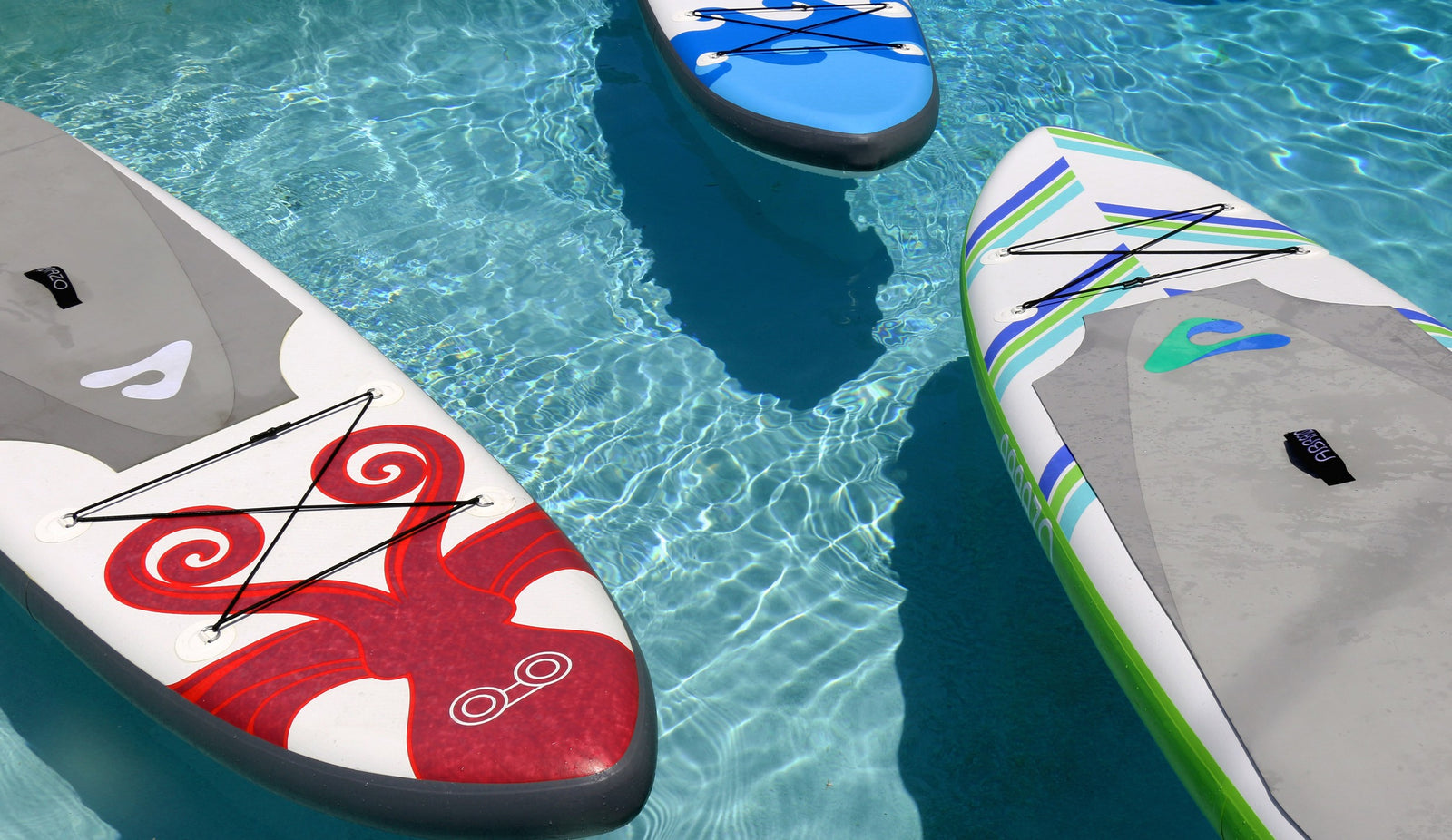How to Clean Your Paddleboard: A Complete Guide

Proper care and maintenance are essential to prolong the life of your paddleboard (SUP) and ensure it performs well on the water. Whether you own an inflatable paddleboard (iSUP) or a hardboard, regular cleaning is important to prevent damage, preserve the board's appearance, and avoid the build-up of dirt, salt, or mold. This guide will walk you through the steps to clean your paddleboard effectively and keep it in excellent condition.
Why Cleaning Your Paddleboard Matters
Your paddleboard is exposed to various elements during use, including saltwater, freshwater, sand, algae, and the sun’s UV rays. Over time, these factors can wear down your board’s surface, affect its performance, and lead to issues like:
- Salt and Mineral Buildup: After exposure to saltwater or mineral-rich lakes, deposits can form on your board, which can degrade the material over time.
- Dirt and Debris: Sand, mud, and other debris can accumulate, especially on the deck pad and fin box, leading to discomfort and damage.
- Mold and Mildew: Inflatable boards, in particular, can trap moisture if not properly dried, leading to mold and mildew growth.
- UV Damage: The sun’s ultraviolet rays can cause fading, weakening the board's structure.
Regular cleaning helps to prevent these issues and ensures that your paddleboard lasts longer.
Step-by-Step Guide to Cleaning Your Paddleboard
Follow these steps to thoroughly clean your paddleboard:
1. Rinse with Fresh Water
After each use, especially if you’ve been paddling in saltwater or murky lakes, rinse your paddleboard thoroughly with fresh water. Use a hose or a bucket to remove any visible dirt, salt, or debris from the surface. Pay attention to the deck pad, fin box, and handles, as these areas tend to collect dirt and grime.
- Tip: Avoid using high-pressure washers, as the force can damage the board's surface, especially the seams on inflatable paddleboards.
2. Mild Soap Solution
For a deeper clean, fill a bucket with fresh water and add a small amount of mild soap or a biodegradable cleaner. Gently scrub the board with a soft sponge or cloth to remove any stuck-on dirt or stains. Focus on areas with visible grime, such as the rails, deck pad, and fin area.
- Avoid: Harsh chemicals like bleach or abrasive cleaners, which can damage the finish and degrade the materials of both hardboards and inflatable paddleboards.
3. Deck Pad Care
The deck pad often traps sand, dirt, and small debris. Use a soft brush or a sponge to scrub it gently. Ensure that all the crevices are cleaned out, especially where dirt may have embedded into the foam material. For stubborn dirt or stains, a slightly stiffer brush can help lift the grime without damaging the pad.
4. Fin Box and Fins
Remove the fins from the fin box and rinse both the fins and fin box thoroughly with fresh water. Sand and debris can accumulate in this area, which can affect performance if not cleaned properly. Use a soft brush to clear out any remaining particles.
5. Dry the Board Thoroughly
After rinsing and scrubbing, make sure to dry your paddleboard completely before storing it. For inflatable boards, wipe down the board with a towel, then allow it to air dry in a shaded area. Never leave your paddleboard in direct sunlight for extended periods, as this can lead to UV damage and warping.
- Tip: Ensure that the board is completely dry before deflating and rolling it up, as trapped moisture can lead to mold growth.
6. Storage
Once clean and dry, store your paddleboard in a cool, dry place away from direct sunlight. Avoid leaving it outdoors for long periods, as exposure to the elements can shorten its lifespan. For inflatable boards, ensure they are deflated and rolled up correctly, with no moisture trapped inside. Hardboards should be stored on a rack to prevent warping or dings.
7. UV Protection
To prevent UV damage, consider applying a UV protectant spray designed for watercraft. This will help protect the board's surface from sun exposure, keeping it looking new and extending its life. Make sure the board is clean and dry before applying the spray, and follow the product's instructions for best results.
Final Thoughts
Taking the time to clean your paddleboard after every use can significantly extend its lifespan and improve its performance on the water. By rinsing it with fresh water, using a mild soap solution, caring for the deck pad, and properly storing it, you can prevent the accumulation of dirt, salt, and other damaging elements. Additionally, protecting your board from the sun and ensuring it’s completely dry before storage will keep it looking and performing its best for years to come. Regular maintenance is a small price to pay for keeping your paddleboard in peak condition.




Leave a comment